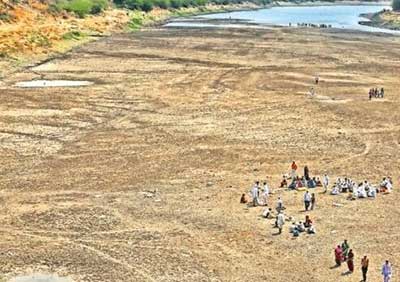Date: 17/04/2023
Relevance: GS-3: Conservation, environmental pollution and degradation, environmental impact assessment: Disaster and disaster management.
Key Phrases: Flash Droughts, Southeast Asia, Sub-Saharan Africa, Climate Change, Amazon Basin, Global Warming, Livelihoods, Computer Modeling, Science and Technology, Precipitation.
Context:
- In tropical regions such as India, Southeast Asia, sub-Saharan Africa, and the Amazon basin, the study revealed that flash droughts were more frequent than slower ones.
Key Highlights:
-
A study finds human-caused climate change responsible for increased occurrences of rapid-onset droughts called flash droughts, which can cause harm to crops within weeks, especially in humid regions with rain-fed agriculture.
-
The study, which was published in the journal Science, finds that as global warming continues, flash droughts will become more common and rapid in onset, and this could have grave consequences for people in humid regions whose livelihoods depend on rain-fed agriculture.
Rapid Onset and Devastating Effects
-
Flash droughts are a severe form of drought that occurs when there is a sudden and rapid loss of soil moisture, leading to crop damage within weeks.
-
These droughts generally occur when the rain would usually be expected to fall, but very little actually does.
-
This means that hot, sunny, and windy conditions often cause large amounts of water to evaporate quickly, leading to the rapid drying of the land.
-
-
Flash droughts are particularly harmful as they can develop very quickly, in a matter of weeks, and cause severe harm to crops.
-
The effect of such a drought is often more devastating because crops have not had enough time to develop resistance to the drought-like situation.
-
Research Findings
- The research was carried out by Xing Yuan, a hydrologist at Nanjing University of Information Science and Technology in China, who led a team that looked at data from computer models of soil moisture between 1951 and 2014.
- They focused on drought episodes that were 20 days or longer, to
exclude dry spells that were too short to cause much harm.
- The team found that flash droughts occurred more frequently than slower ones in tropical places like India, Southeast Asia, sub-Saharan Africa, and the Amazon basin.
- The researchers also found that even for slow droughts, the onset
speed has been increasing, showing a shift toward more frequent and more
rapid flash droughts.
- In some regions, such as the mid-latitudes of North and South America, flash droughts largely replace the slower droughts that were more common in the past.
The Role of Climate Change
- The study argues that climate change is a major contributor to
the increased occurrence of flash droughts.
- As global warming continues, research shows that more abrupt dry spells could have serious consequences for people in humid regions who depend on rain-fed agriculture.
- According to the study, flash droughts tend to occur more
frequently and with greater intensity in regions that used to experience
mainly slow droughts.
- This means flash droughts impact regions where crops are dependent on rainfall for growth and survival.
Implications for Agriculture
- Rain-fed agriculture in humid regions is dependent on the water
supply from rainfall, and sudden droughts can put crops at risk.
- Flash droughts are particularly harmful as they can cause severe damage to crops within weeks.
- This type of fast drought onset can result in a significant loss of crops, leaving farmers with little time to plan and take measures to protect their harvest.
- Furthermore, soil moisture, which provides important ecological and hydrological functions, can also suffer permanent damage if exposed to flash droughts, leading to long-lasting ecological impacts.
Conclusion
- The occurrence of flash droughts, a phenomenon increasingly caused by the human-induced climate change, poses a severe threat to rain-fed agriculture globally, especially in humid regions of the world
- Therefore, it is essential for policymakers to address this issue
and promote climate resilience in the agriculture sector globally.
- Furthermore, the adoption of appropriate agricultural practices such as water conservation, suitable crop selection, and land management practices can help farmers mitigate the impact of sudden droughts.
- Ultimately, urgent action is required to mitigate the impact of flash droughts on agriculture and livelihoods in vulnerable regions.
Source: The Indian Express
Mains Question:
Q. Explain the concept of "flash drought" and its impact on agriculture and food security in tropical regions. What are the factors that contribute to the occurrence of flash droughts, and what measures can be taken to mitigate their effects? (250 words).







